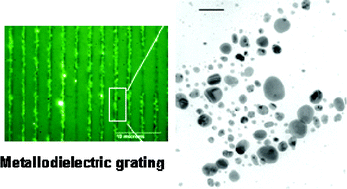Photolytic formation of Ag nanoparticles in oligomeric organosiloxanes: new photolithographic routes to metallodielectric microperiodic structures†
Abstract
A single-step, room temperature photolithographic route to fabricate periodic metallodielectric microstructures is reported. Ag


 Please wait while we load your content...
Please wait while we load your content...